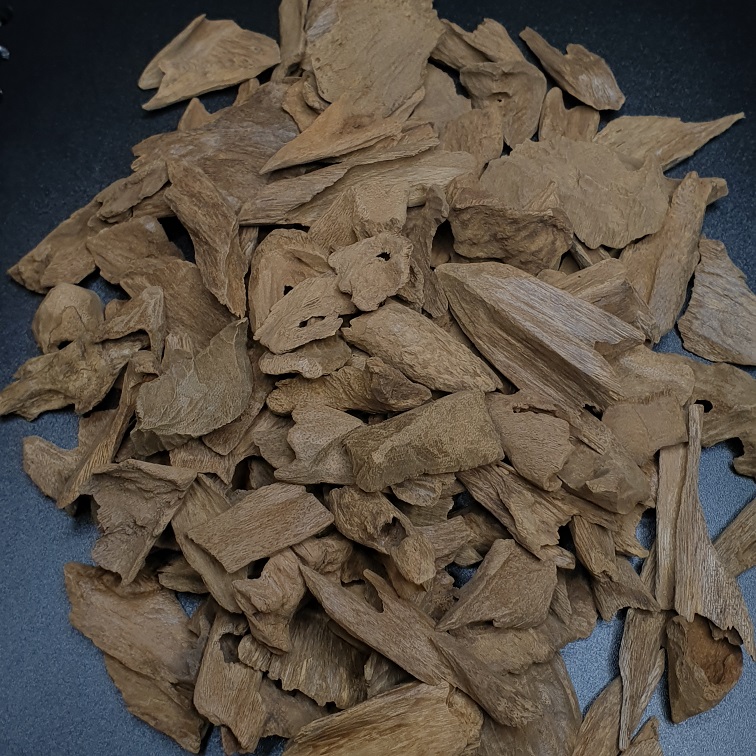Oudh

During the high and late medieval periods Arabian traders dominated the maritime routes throughout the Indian Ocean allowing them the ability to expand the spice trade from the Indian Subcontinent and the Far East, via land and sea to the rest of the world. They traded and shipped spices, scents & woods from the trading emporiums of India westwards towards the Persian Gulf and onto Europe.
Our historical texts reference the merchandise from India with much admiration – whether it was the Al Qist Al Hindi (Costus Roots) with its many healing benefits or the Mandalee the most supreme of the Indian Oudhs, these were considered the prime & crème de la crème commodities of their time. In fact, not even gold could be compared to the value of a chest of Mandalee or the exquisite Samandari Oudhs of Kerala. Mandalee was for the Arabs as Kyara is for the Japanese and Kinam for the Chinese.
The Best Oudh
According to our tradition Mandalee is considered “the best of Indian Oudh wood” – something the majority of people have never ever experienced. The Al Shareef philosophy is to take you on a journey back in time, to experience the delights of years gone by and to give you an opportunity to luxuriate in the scent of fine oudhs of the past.
Though nowadays one of the more popular methods of Oud wood application is by way of its Oil, historically this was not the case. The foremost method of Oudh enjoyed by countless people around the world was the burning of its precious wood as fragrant incense.
Oudh In Culture
Arabian
In the Arabian Peninsula burning Oudh Wood as incense was and continues to be relished as a daily part of life. Winding down after meals have been served, the coffee simmering away on a make shift wood fire, a piece of charcoal is placed on the renowned Mabkhara, allowed to rest to white ash and a wonderful resinous Oudh chip placed upon the charcoal to bubble away as family and friends relax and leisurely sip away on spiced Arabic Coffee and revel in the aromatic wafts of Oudh.
Oudh is a part of culture in our parts of the world, in some other parts of the world such as Japan there is separate culture around the admiration and study of oudh heating. In China the smoke that rises from burning of Oudh would be studied and art painted from it.
Japanese
The contemporary Japanese methodology of incense culture takes it’s roots from the Chinese incense culture. The Chinese have been using some sort of incense as far back as the neolithic period and becoming more wide spread in the Shu’e, Jung, Juo’e Dynasties at around 2000 BC.
The incense culture in Japan only dates back 1200 years, when a Chinese Buddhist monk Jien Jun set out on a mission to Japan to spread Buddhism. He took along with him a large collection of Incense ingredients and Spices amongst other things.
The famous Japanese folk lore of a big chunk of Agarwood washing on the shore and the soldiers burning it for firewood, before the remains were sent to the Palace because the General noted the smell to be beautiful, at the Palace they identifying it as Agarwood. Japanese historians place this event to be after the period that Jien Jun had arrived there and established the understanding of incense, and therefore whilst the common folk had no idea yet (burning agarwood for fire wood) , the nobles were developing understanding of the art.
Chinese
The Chinese appreciated 3 things in the evaluation of the incense, the ingredients that went into making the incense, the shape /colour of the smoke and how long the smells lasted. They then expressed the evaluation in poetry that was more than just an evaluation but a reflection on life composed as lines about incense. These three distinct elements were observed in three main methods, Indirect heat, direct heat, and Shape burning. Shape burning was the practice of using incense powder and drawing the shape of one Chinese character, then burning it with direct heat.
Across the different Chinese dynasties noblemen, monks and people of the high class were encouraged to engage in incense, painting, tea classification and flower arrangement, these were known as the 4 basic gentle arts.